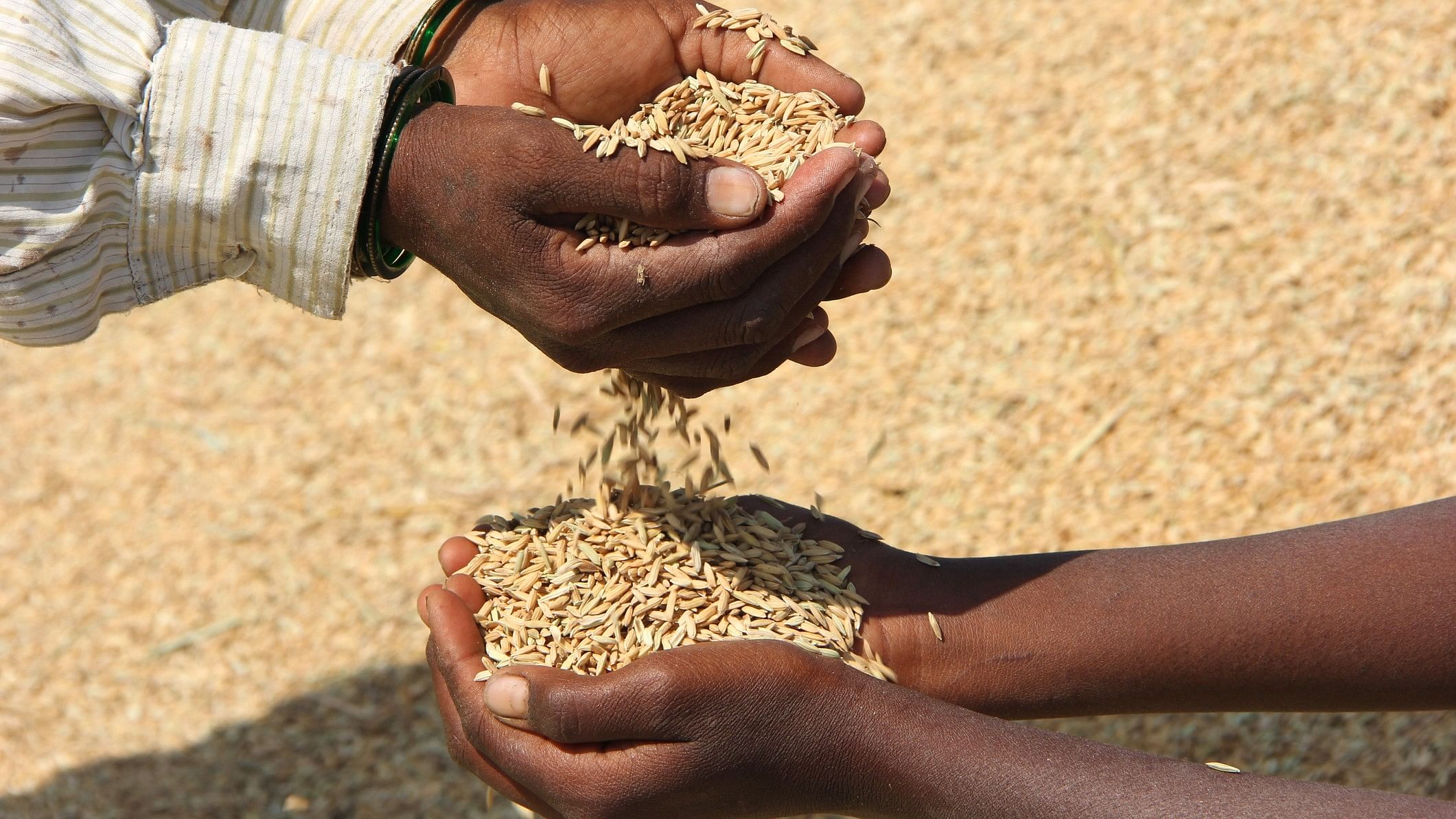
Image for representation.
Credit: iStock Photo
Despite its economic progress, Gujarat faces considerable hurdles in meeting the UN’s SDG-2, which aims to eliminate hunger, ensure food security, and promote sustainable agriculture.
Ensuring adequate nutrition and food security enhances productivity, reduces healthcare costs, and fosters a healthier workforce — critical for long-term economic stability and growth. Achieving the SDG-2 is not just a moral imperative but a cornerstone of inclusive development, requiring targeted interventions, and effective policies to improve nutritional outcomes, and bridge economic disparities.
Gujarat's SDG-2 index score stands at 41 in 2023-2024, placing it below the national average of 52 and within the aspirant category (SDG between 0-50). This performance is notably poorer than that of economically poor states such as Rajasthan and Uttar Pradesh, which have achieved performer status (SDG between 50 and 65). Furthermore, Madhya Pradesh and Odisha have outperformed Gujarat in the SDG-2 rankings.
From 2018 to 2023-2024, Gujarat has remained in the aspirant category with no significant progress. In contrast, Rajasthan and Uttar Pradesh have advanced to the performer category. Gujarat's score has declined from 46 in 2018 to 41 in 2023-2024, showing no improvement between 2019-2020 and 2023-2024. Remarkably, despite being among the top five states in terms of income indicators, Gujarat ranks among the worst five states for SDG-2 performance, highlighting a critical disparity between its economic affluence and nutritional outcomes.
Gujarat’s progress in child nutrition has been notably stagnant since the NFHS-4 survey. Over the past four years, the rate of stunting among children has remained at 39%. The percentage of underweight children has seen a slight increase from 39% to 40%, while the rate of wasting has only marginally decreased from 26% to 25%. These persistent high levels of undernutrition underscore the urgent need for comprehensive strategies to effectively address the problem.
The state’s nutritional indicators further reflect its challenges. According to recent data, 39.7% (the national average is 32.1%) of children under five are underweight and 39% are stunted (the national average is 35.5%), indicating chronic malnutrition and impaired growth. Moreover, the percentage of underweight children increased significantly from 34.2 in 2020-2021 to 39.7 in 2023-2024, and no favourable significant change has been observed in the ratio of stunted children in Gujarat.
The MPI 2023 report underscores the critical nexus between nutrition and poverty in Gujarat, revealing that nutrition contributes 31.8% to the state's Multidimensional Poverty Index, the highest among all indicators. The report further highlights that 38.09% of Gujarat's population is undernourished, with rural areas particularly affected, where 44.45% population lacks adequate nutrition. In urban regions, the undernourishment rate stands at 28.97%, reflecting widespread nutritional deficiencies across the state. Achieving the target of reducing the percentage of underweight children to 13.3% and stunted children to 23.7% by 2030 appears to be a herculean task for the state.
Anaemia, characterised by inadequate haemoglobin levels, is a significant public health concern in Gujarat. According to NFHS-5 data, 80% of children aged 6-59 months in the state are anaemic, reflecting a troubling 17-percentage point increase from NFHS-4. During the same period, the prevalence of anaemia among women aged 15-49 years in Gujarat increased by 12.5%. Additionally, 62.5% of pregnant women in this age group are anaemic, a rate significantly above the national average of 52.5%. The target of reducing this to 25.2% by 2030 also seems like a distant reality.
It is particularly troubling to observe that Gujarat, despite its relatively advanced economic status, has shown a deterioration in key nutritional indicators compared to the BIMARU states. In 2018, 38.5% of children under five in Gujarat were stunted, with this figure slightly rising to 39% by 2023-2024. This stands in stark contrast to significant improvements in BIMARU states: Bihar's stunting rate decreased from 48.3% to 42.9%, Madhya Pradesh from 42% to 35.7%, Rajasthan from 39.1% to 31.8%, and Uttar Pradesh from 46.3% to 39.7%.
Similarly, anaemia among pregnant women in Gujarat has worsened, with the rate increasing from 51.3% in 2018 to 62.5% in 2023-2024. In comparison, while Bihar’s anaemia rate has risen from 58.3% to 63.1%, Madhya Pradesh remains stable at 52.8%, and Rajasthan and Uttar Pradesh have seen minimal changes.
These trends highlight a significant shortfall in Gujarat’s nutritional policies, underscoring the urgent need for more robust, comprehensive, and targeted interventions. Addressing these escalating nutritional challenges is essential for narrowing the growing disparity and enhancing the state’s overall nutritional outcomes.
(Atman Shah is assistant professor, Department of Economics, St. Xavier’s College (Autonomous), Ahmedabad.)
Disclaimer: The views expressed above are the author's own. They do not necessarily reflect the views of DH.